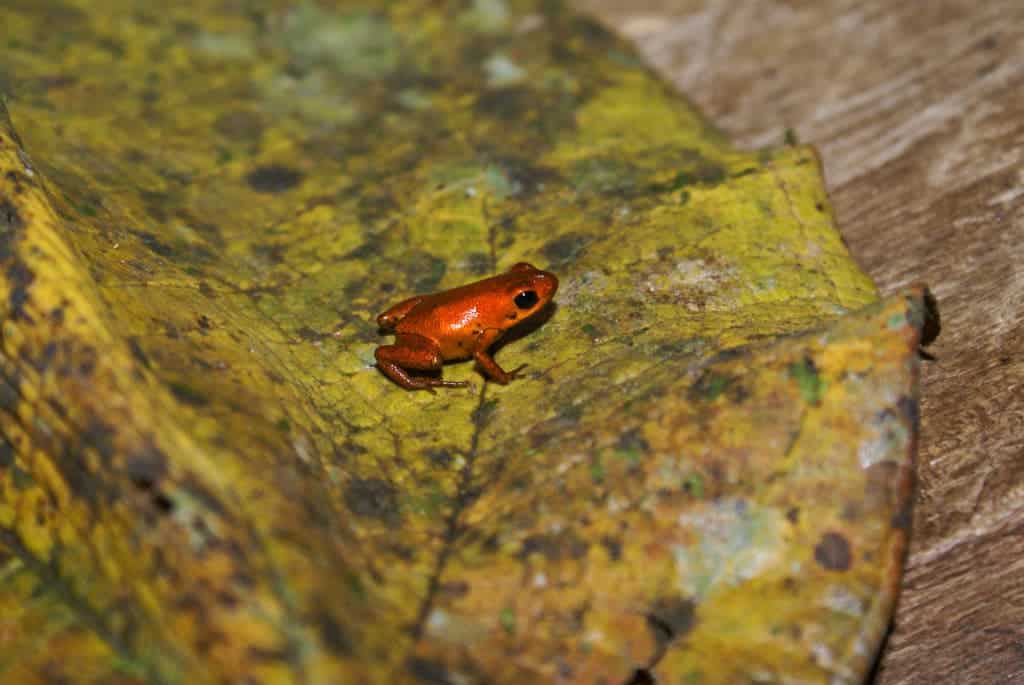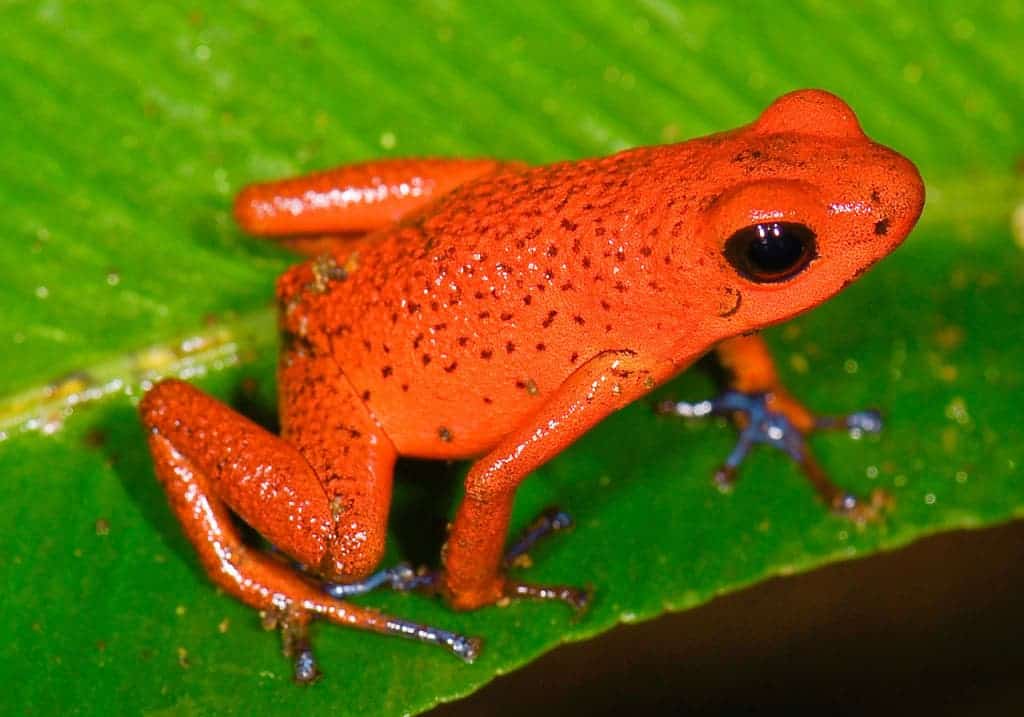Scientists have discovered a toxic, brightly colored and extremely small dart frog in the hilly areas near the Caribbean coast. Measuring just 12.7 millimeters in length, the newly described Andinobates geminisae is quite mysterious.

The first strange thing about it is that it looks very different from its closest genetic relatives; namely, it’s bright orange. Andrew Crawford, a professor of evolutionary genetics and biostatistics at the University of the Andes in Bogotá, Colombia said:
“The new species superficially looks much more like the strawberry poison dart frog (Oophaga pumilio),” Crawford said. “Perhaps A. geminisae had been observed previously but was confused with Oophaga.”
Oophaga pumilio is also called strawberry poison frog or strawberry poison-dart frog; it’s a fairly common species throughout central America, ranging from central Nicaragua through Costa Rica and northwestern Panama. It seems possible to mistake the two species one for another, because the strawberry poison frog, though usually strawberry red (heh) can also be orange. The two amphibians may have these bright colors to signal the fact that they are highly poisonous and ward off predators – something called Müllerian mimicry. In Müllerian mimicry two or more poisonous species that are not related develop the same warning signals. It is named after the German naturalist Fritz Müller, who first proposed the concept in 1878.

Not much is known about this newly discovered species of frog, though biologists discovered an adult with a tadpole on its back, which seems to suggest that they care for their young. This behavior has also been observed in other poison dart frogs: adults piggyback tadpoles one by one to small pools of water, where they develop into froglets.
The toxins haven’t been studied yet. Indigenous tribes sometimes use frog venom to make their weapons poisonous, but they generally use venom from the golden poison dart frog (Phyllobates terribilis) from Colombia.
Biologists are worried about the future of dart frogs, as they are threatened by habitat reduction, climate change, exotic collectors and the Chytrid fungus.
“It is important we save some of this frog’s tiny habitat to be able to study this unusual species more,” Crawford said.






